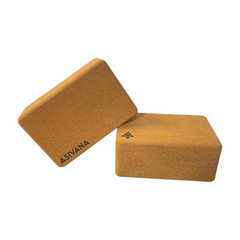Panca Mahabhuta (The Five Great Elements)
Jack UtermoehlShare
Panca Mahabhuta is a Sanskrit term meaning “the five great elements,” which form the foundation of all material and energetic existence in yogic, Ayurvedic, and Vedic philosophy.
These elements—earth, water, fire, air, and space—represent the building blocks of the natural world, the human body, and the subtle energy system.
In yoga, understanding the Panca Mahabhuta deepens our connection to nature, supports physical and energetic balance, and enhances self-awareness through the lens of elemental qualities.
Etymology and Meaning
Sanskrit Spelling: पञ्च महाभूत
Root Words: "Panca" (five) + "Mahabhuta" (great elements)
Translation Variations: Five elements, five forces of nature, elemental foundation
Pronunciation: Pañca Mahābhūta [PUN-cha mah-HAH-bhoo-tah]
These elements are both literal (material) and symbolic (subtle), each representing different qualities and functions in the body, mind, and cosmos.
The Five Great Elements
- Prithvi (Earth): Stability, form, structure, support
- Apas (Water): Fluidity, emotion, purification, adaptability
- Agni (Fire): Transformation, digestion, energy, illumination
- Vayu (Air): Movement, breath, circulation, life-force
- Akasha (Space): Openness, potential, subtle awareness
Together, these elements account for everything that exists in the material and energetic realms—what we perceive through the senses and what we intuit through subtle awareness.
Panca Mahabhuta in Yogic and Ayurvedic Philosophy
In both yoga and Ayurveda, the five elements form the foundation for understanding health, energy, and consciousness:
- In Yoga: The chakras, koshas, and subtle body are each influenced by the elements. Elemental balance is essential for physical vitality and spiritual growth.
- In Ayurveda: The three doshas—Vata, Pitta, and Kapha—are combinations of the elements. Diagnosing imbalances in elemental makeup helps guide healing, diet, and lifestyle practices.
- In Tantra: Elemental energies are used in rituals, mantras, and meditations to transform the mind and purify the body.
Symbolism and Elements
- Earth (Prithvi): Root chakra, sense of smell
- Water (Apas): Sacral chakra, sense of taste
- Fire (Agni): Solar plexus chakra, sense of sight
- Air (Vayu): Heart chakra, sense of touch
- Space (Akasha): Throat chakra, sense of hearing
Yoga Essentials for Your Practice
Support your yoga journey with high-quality, sustainable props designed for comfort and stability.

Crafted from eco-friendly cork for durability and a comfortable practice.
$24
Shop Now
Includes everything you need to get started: a mat, blocks, and a yoga strap.
$120
Shop NowPractical Application
In Yoga Practice
- Balance elements through chakra-focused asanas and meditations
- Work with breath and movement to influence the fire and air elements
- Use grounding practices to restore earth element; fluid sequences for water
In Daily Life
- Observe which elements dominate your personality or current state (e.g., fiery emotions, scattered airiness)
- Adjust diet, habits, and environment to support elemental harmony
- Spend time in nature connecting directly with each element
Quotes and Wisdom
"You are not separate from nature. The same elements that form the cosmos also form you."
"Balance the five, and the Self begins to shine through."
Modern Relevance
Understanding the Panca Mahabhuta brings clarity to our experiences—why we feel imbalanced, anxious, overheated, or emotionally heavy.
The elements give us a language to explore the inner and outer worlds, reconnecting us to nature, presence, and embodied wisdom.
Related Concepts
Doshas: Vata (air + space), Pitta (fire + water), Kapha (earth + water)
Kosha: The layers of being influenced by elemental energies
Chakras: Energy centers each associated with a specific element
Related: Ayurvedic Dosha Assessment Tool
How to Work with the Five Elements
Mindset: See yourself as nature—shifting, elemental, whole
Actions: Create a daily practice that honors breath, nourishment, rest, and movement across all five elements
Reflection: Ask, “Which element is calling for attention right now?”
Suggested Reading
- Ayurveda and the Mind by Dr. David Frawley
- The Heart of Yoga by T.K.V. Desikachar
- Prakriti by Dr. Robert Svoboda
Conclusion
Panca Mahabhuta—the five great elements—offer a complete view of the body, nature, and consciousness.
When we understand and honor these elemental forces, we begin to live in harmony with both the inner and outer world, grounding our practice in the rhythms of life itself.






